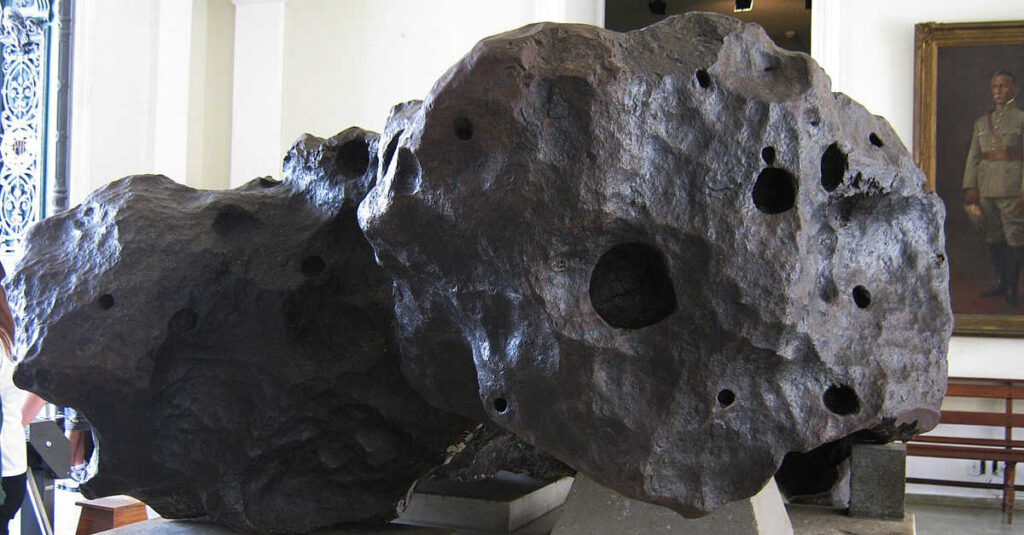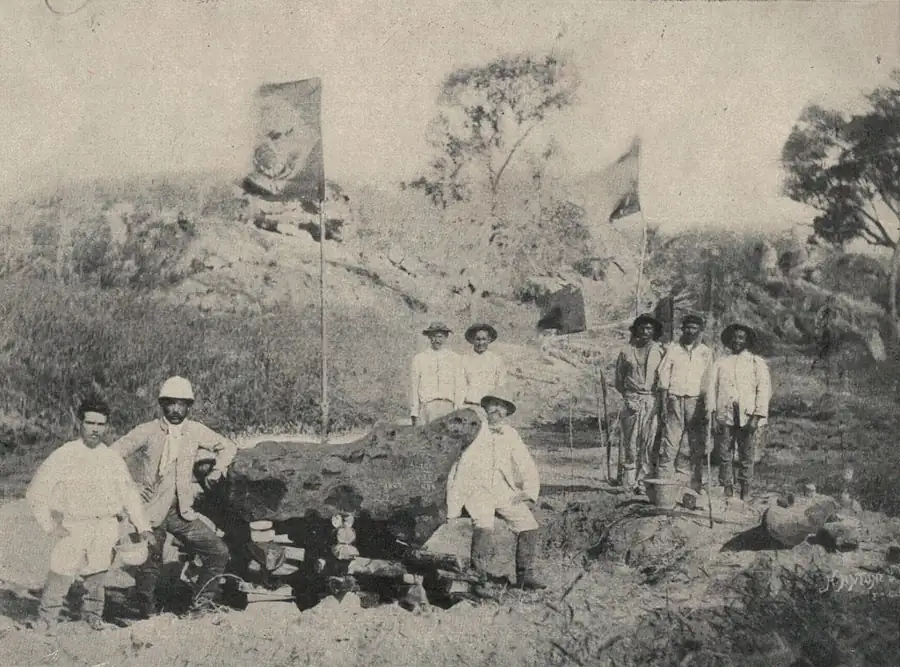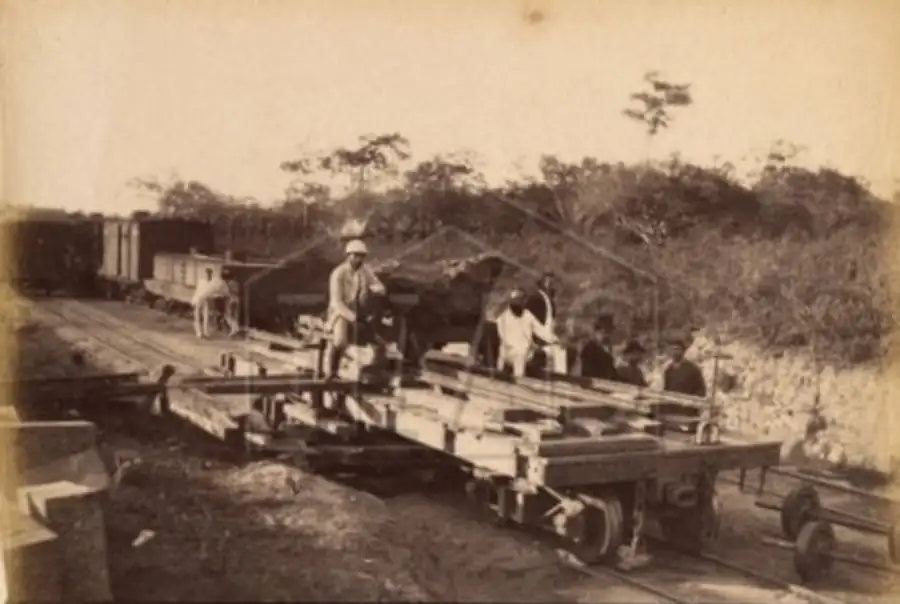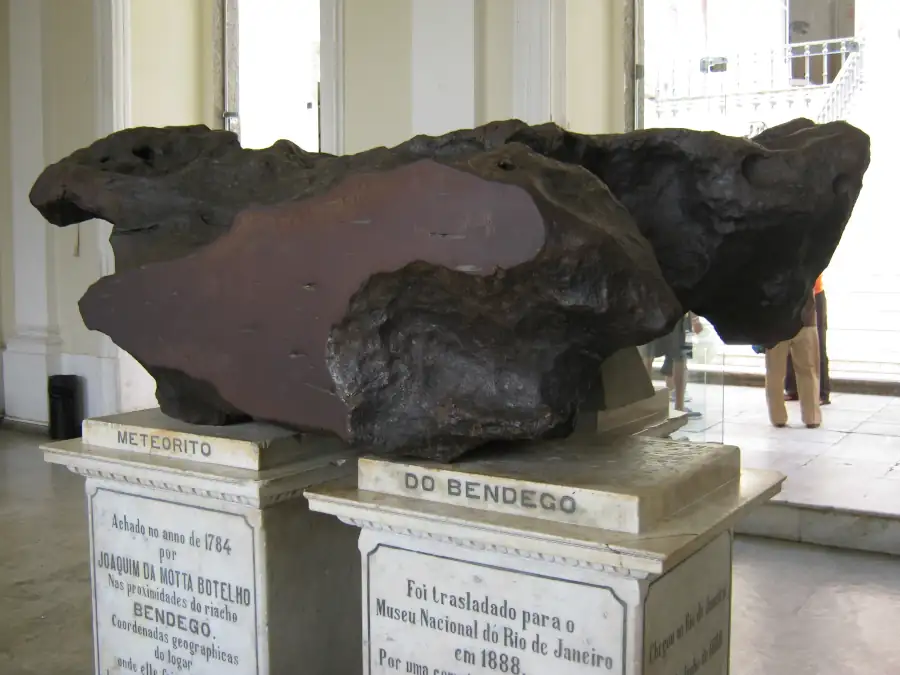The curious story of the Bendegó Meteorite
The meteorite faced Brazilian bureaucracy, sparked popular unrest, was visited by Einstein, and survived a fire at the National Museum.

The Bendegó is the largest and heaviest meteorite in the Brazilian collection of rocks and fragments of extraterrestrial origin, and ranks as the 16th largest ever found on Earth. In 1889, for instance, it was recognized as the largest meteorite on display in any museum worldwide.
The massive meteorite is composed primarily of iron (95.1%), nickel (3.9%), and trace amounts of other elements. It weighs 5.36 metric tons and measures 2.15 meters in length, 1.5 meters in width, and 65 centimeters in height.
It is estimated that the meteorite fell in Brazil thousands of years ago. Its discovery in the late 18th century came at a time when most scientists did not believe in the existence of meteorites, highlighting the importance of this Brazilian find for the global history of meteoritic science.
Discovery of the Bendegó Meteorite
According to the National Museum of Brazil, the meteorite was discovered in 1784 by a young man named Domingos da Motta Botelho while he was herding cattle on a farm about 35 kilometers from the town of Monte Santo, located in the backlands of Bahia, in the northeast of Brazil. While searching for a stray cow, he came across the meteorite near the bed of the Bendegó stream — which ultimately gave the space object its name.
At the time, the existence of rocks falling from space was still widely disbelieved. In addition to its unusual size and shape, the meteorite drew attention for bearing no resemblance to other rocks in the region. News of the “stone” quickly spread and reached the local governor.
The discovery took place during colonial Bahia, under the reign of Queen Maria I of Portugal. Initially, the massive metal object was thought to be evidence of an iron deposit in the area, leading the governor to order it transported to Salvador, so it could eventually be shipped to Portugal.
According to researcher Wilton Pinto de Carvalho from the Federal University of Bahia, at least three unsuccessful attempts were made to transport the meteorite to Bahia’s capital in the years following its discovery. However, the terrain’s soft soil and steep incline — combined with the meteorite’s enormous size and weight — made removal extremely difficult.
In one attempt, 30 men tried to move the space rock using four wooden levers. In another, a wooden ox cart managed to transport it only 180 meters. An improvised embankment was even built, but it collapsed under the weight of the cart and its heavy load. Some accounts claim that the wooden cart carrying the meteorite eventually lost control and fell into the Bendegó stream.

In addition to these setbacks, the idea of sending the meteorite to Portugal was abandoned in the following decades, likely due to the unstable political situation in Lisbon caused by the French invasion and the subsequent relocation of the Portuguese royal court to Brazil in 1808.
As a result, attempts to move the meteorite were halted, and the Bendegó was left at the same spot where it had been discovered for nearly 100 years.
Confirmation of the Meteorite
In 1811, the find was recognized as a probable meteorite by the Royal Geological Society of London. At the time, an English citizen working for the government of Bahia extracted samples from the meteorite and sent them to London for analysis.
He also confirmed the absence of iron deposits in the region, strengthening the hypothesis that it was indeed a meteorite. You can view his study here!
The Bendegó meteorite was also visited by Austrian naturalists in 1819, who collected additional samples to determine its nature, composition, and structure. To extract the samples, they had to light a fire around the Bendegó and keep it burning for 24 hours.
Later, in 1883, the head of the Mineralogy Section of the National Museum warned that the Bendegó could become buried by sediment during river floods, which could result in the meteorite’s location being lost.
Relocation to Rio de Janeiro
It was only in 1886, toward the end of the Second Empire of Brazil, that action was finally taken after Emperor Dom Pedro II became aware of the meteorite’s existence and scientific importance.
Dom Pedro II had been advised in France by members of the French Academy of Sciences to have the meteorite transferred to a museum. Responding to this advice, the emperor personally ordered an expedition to transport the meteorite to the capital, placing the task under the responsibility of the Rio de Janeiro Geographical Society.
The transport began on September 7, 1887, and was completed on June 15, 1888. It took 126 days to cover the 119 kilometers from the streambed to the Jacurici village railway station, located in the municipality of Itiúba, from where it continued by train to Salvador. From there, it was shipped by boat to Rio de Janeiro.

Local Uprising
In 1887, a monument was built at the site where the meteorite was discovered. However, it was soon destroyed in an act of rebellion by superstitious local residents, shortly after the meteorite was removed.
According to local legend, the meteorite was a “charmed stone” that did not want to leave the Bahia backlands, but was taken away by force. A severe drought that struck the Monte Santo region after the meteorite’s removal was attributed by locals to a “curse of the stone.”
In the traditional Brazilian folk literature known as cordel, the story of the meteorite’s transportation is told in The Saga of the Bendegó Stone, which captures the Bahia residents’ discontent with the “forced” removal of the meteorite, as illustrated in the excerpt below:
“The stone made of
Iron, Nickel, and enchantment.
To this very day
It brings sorrow and wonder.
We want our stone back,
Back to our homeland.”
National Museum
Once in Rio de Janeiro, the meteorite was welcomed at a grand event attended by Princess Isabel, along with scientists and nobles of the time.
Since then, the meteorite had been on display at the National Museum, initially housed in the museum’s first building at Campo de Santana, and later moved to the Imperial Palace of São Cristóvão, in Rio de Janeiro.
One interesting fact is that physicist Albert Einstein visited the Brazilian museum and posed for photos next to the Bendegó meteorite in May 1925.
In addition to the original piece at the National Museum, replicas of the Bendegó were made from wood, plaster, and papier-mâché for exhibition in other Brazilian museums and abroad.
A 60-kilogram fragment of the meteorite was also cut for scientific study and distributed among museums around the world.

Fire at the National Museum
On September 2, 2018, the National Museum of Brazil was struck by a massive fire that destroyed most of its 20 million artifacts, representing 90% of its collection.
The fire was not criminal in origin; it was caused by a short circuit resulting from an overheated air-conditioning unit. A lack of investment in the museum’s maintenance and safety was identified as the main cause of the tragedy.
As for the Bendegó meteorite, its metallic composition and lack of combustible materials allowed it to survive the intense heat of the fire. The Federal University of Rio de Janeiro (UFRJ) is still working on restoring the museum.

In June 2025, six years after the fire, the National Museum partially reopened, with full reopening expected by 2028. In this first phase, visitors have access to a restricted area of Block 1 of the palace, where they can view the Bendegó meteorite.
_
This article was originally published in Portuguese.
About the Author